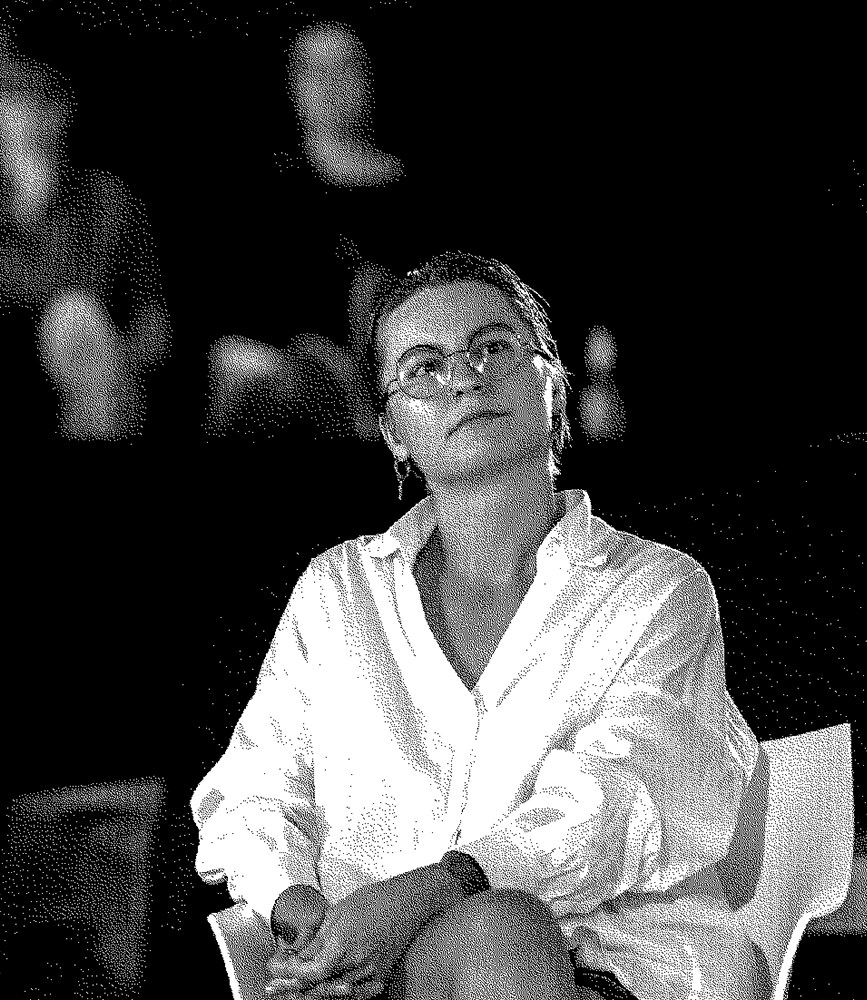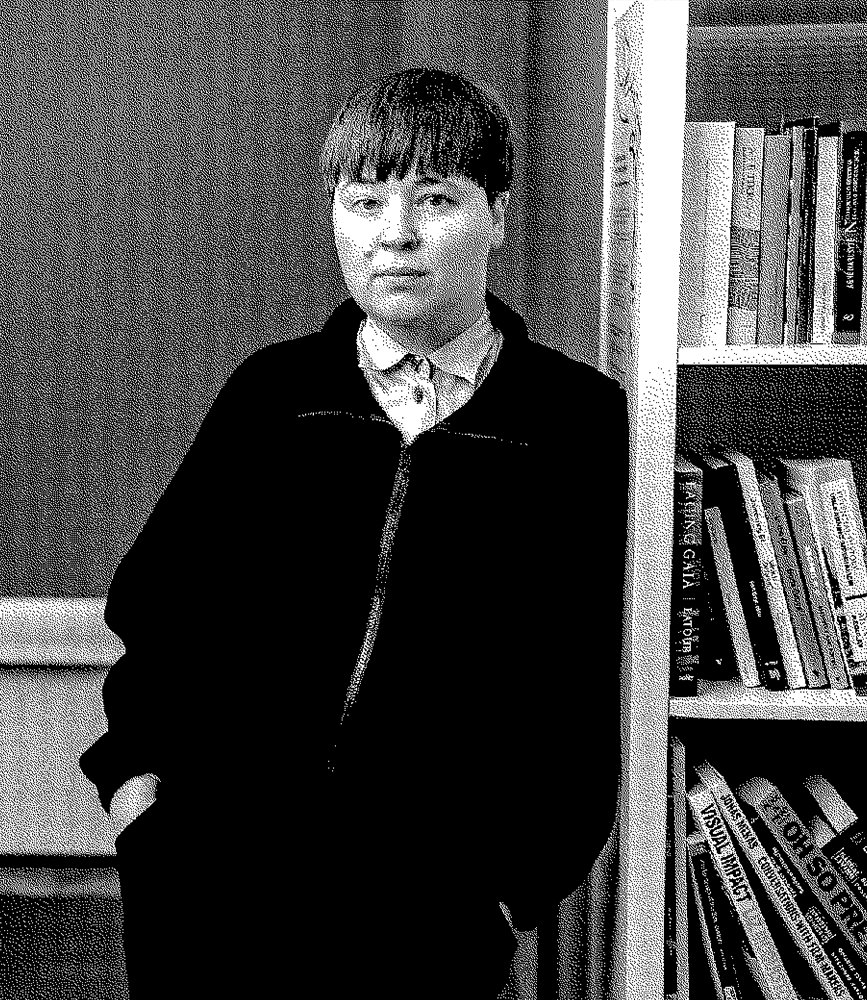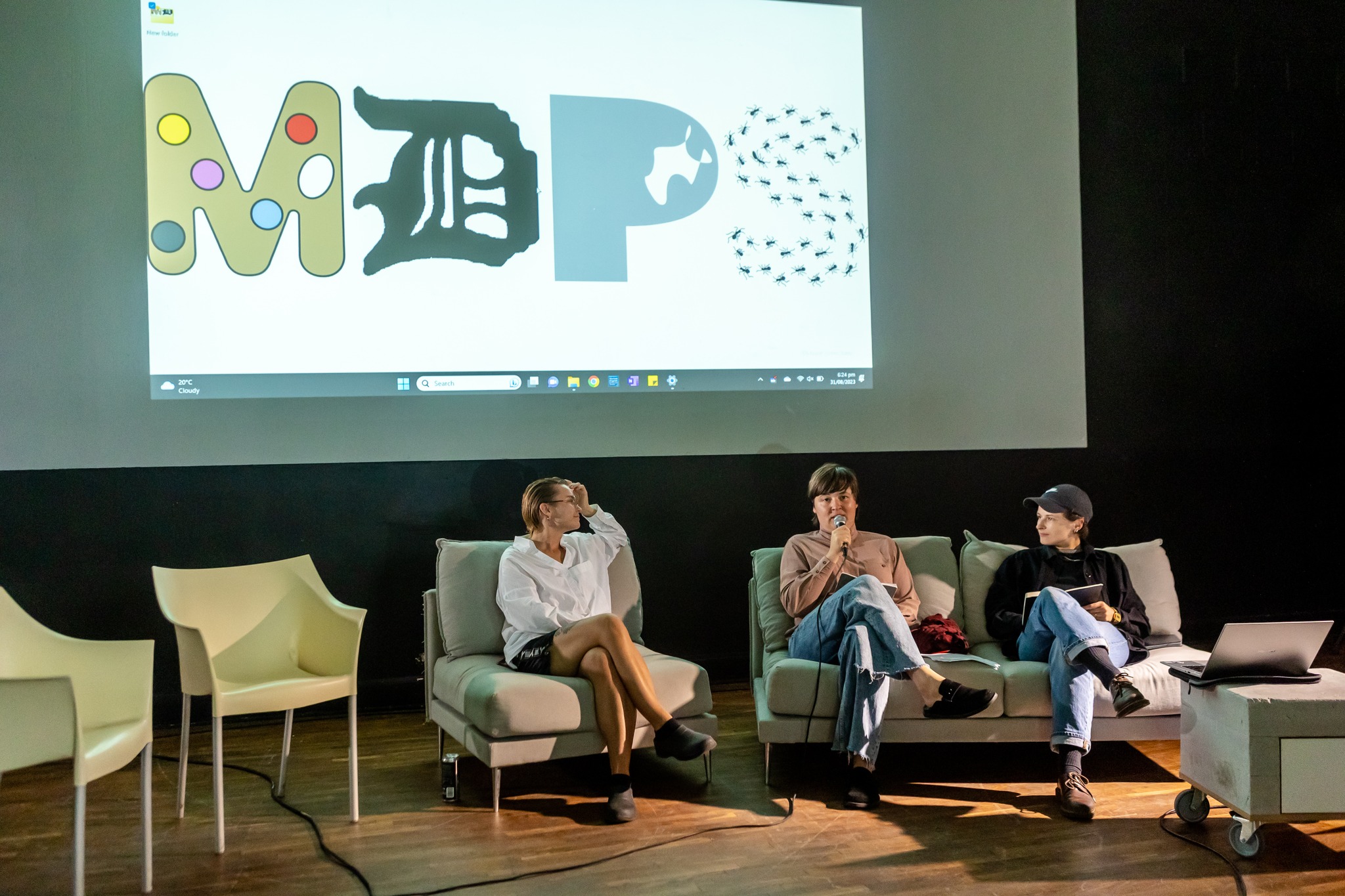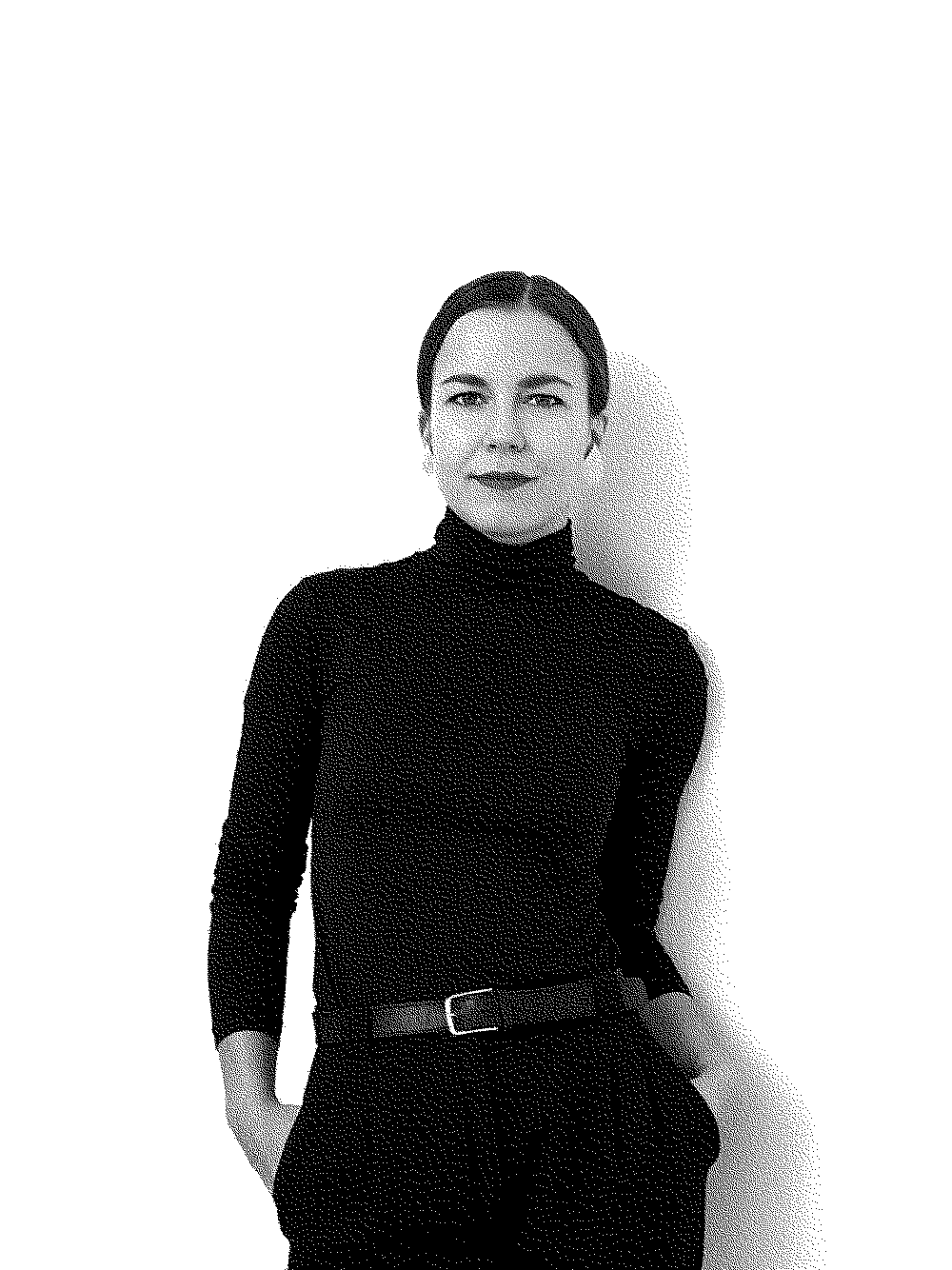It comes as no surprise that precarity and meagre budgets are a reality in the art field. As we again face economic decline and thus cuts in state budgets in the Baltic countries, a new wave of voices calling for a change in funding the cultural sector increasingly come forward. There are people and organisations who have fought for art workers' rights for years, and recently, two new organisations in Estonia and Lithuania have been established.
To map the landscape of arts organisations advocating for better working conditions in the art field in Estonia, Latvia and Lithuania, we asked four institutions across the Baltics how they position themselves and what motivates them. Although different in composition and orientation, these organisations all play a role in shaping the policies that affect their local scenes.
Agnė Bagdžiūnaitė, Vaida Stepanovaitė, Agnė Jokšė: How much do we really know of everyone’s working conditions inside one cultural project, from the person sweeping the floors at the gallery to the one translating your exhibition text?



Agnė Bagdžiūnaitė, Vaida Stepanovaitė and Agnė Jokšė are the coordinators of the Lithuanian Art Workers' Trade Union. Established in 2023, the Union aims to improve the legal environment of cultural work and the material situation of art workers and promote solidarity and mutual aid in visual arts.
Who is an art worker? Working in the public or private sector on the basis of permanent, fixed-term or one-off employment contracts or as freelancers, art workers not only include artists or curators, but also educators, graphic designers, technicians, translators, editors, invigilators, or anyone who has any kind of labour relations with institutions, organisations, initiatives or individuals in the visual arts field.
The Art Workers’ Trade Union (MDPS in Lithuanian, AWTU in English) is a branch of the May 1st Labour Union in Lithuania.

AWTU works in numerous ways. We actively help our members with unpaid contracts on the legal side. We form a voice for art workers in Lithuania by contributing to public discourse about the rights of art workers in popular and specialist media as well as through public appearances. We are conscious of government cultural policies and aim to contribute to improving the national political environment from the perspective of art workers.
We appreciate the complexity of working in the arts: how multifarious the conditions are for art workers in these times, when most of us hold multiple simultaneous positions to supplement stable (albeit precarious) institutional jobs with self-employed work, while social, political and economic volatility has become a constant in our lives.
We believe in the potential of inter-sectoral inter-professional solidarity; how much do we really know about everyone’s working conditions in any given cultural project, including the person sweeping the floors at the gallery, the person translating your exhibition text and the one posting on social media about the exhibition opening? We want to nourish mutual support for each other, from single projects to cultural strategy at the national level.
We have set out to craft a framework for fair pay for art workers in Lithuania to be implemented within government cultural funding schemes and national cultural institutions (also reaching out to inter-institutional and organisational agreements beyond the state’s vision).
Elin Kard: Having worked in the art field for quite some time already, I have a feeling that “good times” never arrive for the cultural field.

Elin Kard is the director of The Estonian Artists Association, which is one of the largest creative unions in Estonia and works on a wide range of issues, taking into account the situation in the arts sector, the specifics of the work artists do and the goals stated in the statutes of the association. The association does advocacy work, supports artists and art workers, provides artist studios in the numerous buildings the association manages, as well as advising their members.
As the director of the association, I look at the art scene as a whole, since both art workers in the broader sense as well as artists are in very difficult situations, regardless of their field, age or other factors. I am motivated to do the work because I know the art field through and through and understand the complexity of the situation. I worked as an artist for many years, then focused mainly on the challenges of being an art worker and now I'm in a position, where I have an opportunity to actually bring change. I can use my experience and know-how from different perspectives in my everyday work. As the association is non-profit, its role is also to continuously explain and make visible the unfair and unbearable situation creative workers have had to endure for decades to effect changes for the better.
Within the art field we have put together a development plan for the art scene in collaboration with the Estonian Centre for Contemporary Art, the Estonian Art Development Center and many artists and art workers. Activities originating from this document cover solving a variety of problems creative workers face: limited access to social guarantees and irregular and insufficient incomes for artists and art workers; the difficult economic situation of the main employers, such as galleries and exhibition venues; the meagre state support, and many other factors.
The Estonian Ministry of Culture has named 2023 the year of creative workers, and our current minister has said her focus for the year will be artists and writers as they are in the most precarious situation compared to other cultural fields. Unfortunately, this did not translate into increasing the number of recipients of the salary for artists and writers next year, which would be the fastest way to help the situation. However, I hope the carefully prepared proposals to change the Law of Creative Workers and Unions will create an intention to change the law and form and pass actual legislation. This could provide a working tool by which the current unfair fees and lack of social guarantees that creative workers (among them artists and art workers) face today could finally be alleviated.
I have the feeling that "good times" never arrive for the cultural field; regardless of which party the Minister of Culture is from or which parties form the coalition or opposition, the prospects for improving the cultural field are usually always poor. There are many reasons for this. We have been waiting politely to be noticed for decades; we have not explained the position of creative workers and art institutions sufficiently and have worked too little together. This suffering has continued for too long, and yes, it is always hard to speak about one's problems. Who would like to admit they cannot handle the situation or need help? I have no illusions that we will be noticed if we just wait and suffer. The pressure for change needs to be more insistent, stronger and more comprehensive than before.
Santa Hirša: Under capitalism, the creation of non-commercial values is not only economically unprofitable for artists but is also subjected to the risk of extinction

Santa Hirša is the General Secretary of The Council of Creative Unions of Latvia (CCUL), an art historian and art critic. CCUL is an umbrella organisation for 12 creative unions whose total membership exceeds 3,000 individual members from different creative fields. The council cooperates with the Ministry of Culture, parliamentary committees, and national and local institutions to represent and defend the professional, social and economic rights of creative individuals.
CCUL actively participates in the framing of cultural policy and draws up concrete financial support mechanisms for creative individuals and art workers that the state can apply to improve the conditions of artists. This includes new targeted programmes and proposals for governmental bills; for example, the Creative Persons Law, which serves as a basis for practical support programmes – grants that art workers can receive in cases of a temporary loss of income or unemployment, short-term illness, as well as covering medical and communal expenses for seniors.
CCUL has created a yearly grant programme for artists that provides “monthly wages” for one year. CCUL fights for social guarantees and the overall increase of art funding and art workers’ salaries. This includes contributing to tax regulations and forms of payment that correspond to the actual creative person’s working conditions, which are mostly unpredictable and irregular. Beyond practical solutions, it is essential to increase awareness of artistic labour and its specific nature in every sector. Art workers are a highly unprotected group in economic and social terms while also performing an extremely important symbolic role in society and every nation's official rhetoric. Under capitalism, the creation of artistic (non-monetary/non-commercial) values is not only economically unprofitable for artists but it is also subjected to the risk of extinction if the state's cultural policy does not consider the social status and welfare of creative individuals as one of their main goals.
Increasing funding for creative work, creative individuals and organisations while monitoring that the financial support keeps pace with inflation and that art workers' average income catches up with and remains in step with non-creative sectors is essential. More stable, annual support for creative associations helps provide a louder and more active voice for the needs of creatives, which vary from sector to sector. A support system for retired artists has to be developed as soon as possible. On the conceptual level, our goals aim to acknowledge artistic work as 'real' work while also considering how it differs from non-creative forms of labour. Creative individuals should be provided with the opportunity to work primarily in their professional field, in conditions where the creative process is their main occupation and not just a hobby in their free time after non-creative employment.
Kadi-Ell Tähiste: A key element for reaching our goals is working together and uniting the voices of different actors

Kadi-Ell Tähiste is the chairperson of the Association of Estonian Art Institutions, established in 2022. It is an association of 34 art organisations, ranging from exhibition spaces of various sizes to essential support structures within the contemporary art field. Their primary objective is to foster collaboration among organisations, advocate for the visual arts, and raise awareness about critical issues affecting art institutions and the livelihood of art professionals.
The association's scope of work includes active participation in policy-making processes, formulating and presenting proposals, and introducing concerns within the art sector, both to decision-makers (such as politicians and government officials) and the public through media outlets. In the immediate future, our two main priorities are to negotiate for a more systematic, transparent and stable funding mechanism for art organisations and to highlight the need to create a support structure for the freelance creatives in our field that ensures fair compensation and access to the social security system.
A key step in reaching these goals is working together and uniting the voices of different actors, both within the visual arts and across the cultural sector. This collaborative spirit defines the essence of our association, as we firmly believe that unity strengthens our ability to address concerns and gain recognition.
In the short term, a realistic goal when it comes to the funding mechanism for organisations is to establish more secure core funding provided by the Estonian Cultural Endowment and the Ministry of Culture, the main funding bodies for art in Estonia. It is necessary to further enhance the Endowment's flexibility in supporting a wider array of (smaller) organisations throughout Estonia and to improve direct access to the Endowment's funds for individual artists. With regard to freelance art creatives, the most likely change on the horizon is the taxation of grants and scholarships provided by the Endowment, enabling the recipients access to the social security system (e.g. health insurance). We have high hopes for additional reforms in the near future, as the Ministry of Culture has diligently assessed the challenges faced by freelance art workers in recent years and has drafted multiple policy proposals aimed at creating a more equitable system. We believe it is high time to move forward with practical solutions.